It seems that any car enthusiast must know not only how to behave on the road, but also where you can leave your car, that is, to park. In fact, for some reason this is not always the case. Perhaps this is because all new parking rules come into effect regularly, or maybe because the system of fines for abandoned cars has not yet been developed. In any case, it is worth clarifying the question of what will be a violation and what will not.
Stop and parking
What is the most common traffic violation? Amazing but it wrong parking. But there is no such concept in the rules, but there is a stop and parking. What is it, clearly stated in the SDA. In the first case, we are talking about a pause of no more than five minutes, the reason for the increase may be the performance of traffic signals or the traffic controller, boarding or alighting passengers, loading goods, etc. If the reason for the pause in the movement of the vehicle is different or it exceeds 5 minutes, this is parking, that is, parking. So how do you know if there is a violation or not?
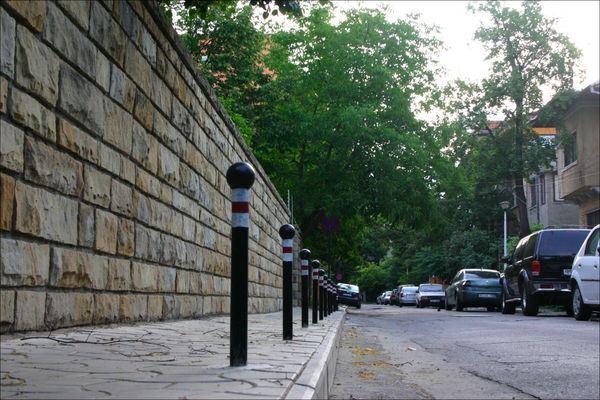
General provisions
Everyone knows two road signs - a blue circle with a red edge, crossed out once or twice. They prohibit parking and stopping respectively. But in the first case it is possible to slow down under the sign of five minutes, and in the second even this will be a violation. Except where there are signs, the rules prohibit stopping on tram tracks, pedestrian crossings, near sharp turns, near route stops if it interferes with public transport. Of course, parking in such places is also impossible.
We can say with confidence that it is permissible to leave the car only where the sign "Parking is allowed" or that there is a corresponding marking, and often both. But if there are no prohibition signs, is it possible to leave the car with a clear conscience? More likely no than yes.
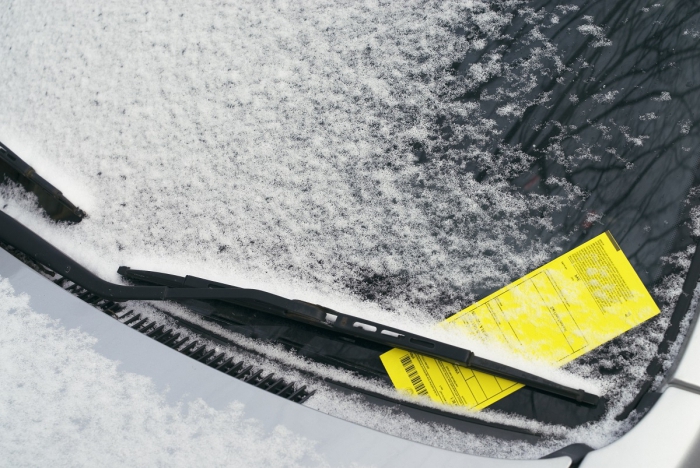
New in 2015
Not so long ago, changes came into effect that affected parking rules as well. But almost all of them are, rather, of a technical nature, no major changes have occurred. For example, a road sign was introduced showing the need to park "herringbone". Also, fines for breaking the rules have been increased in some regions. About what sanctions are currently in force in Moscow, St. Petersburg and the regions, the conversation will go a little lower. In general, the parking rules have not changed for a long time.
Where can and where not?
Parking rules for traffic rules, although it clearly determines which places can be used for parking and which are not, are quite confusing for ordinary motorists. Therefore, in order to understand, you can make a short table.
| Can | It is impossible |
| 5 meters or more from the ground crosswalk | Closer than 5 m to the zebra |
| 5 meters or more from the intersection of the lines of the carriageway | Where the car will block traffic signs and signals from other road users |
| 15 meters or more from public transport | At close range, which prevents buses and trolleybuses from accepting and disembarking passengers |
| 50 meters or more from the railway crossing | In the vicinity of existing railway branches |
| In a row at the edge of the carriageway, if its width and marking allows | At level crossings, in tunnels, on a bridge, on tram tracks and intersections |
Of course, in all these cases we are talking about the absence of prohibitory or, conversely, prescriptive signs, that is, several controversial moments for most drivers, especially beginners.
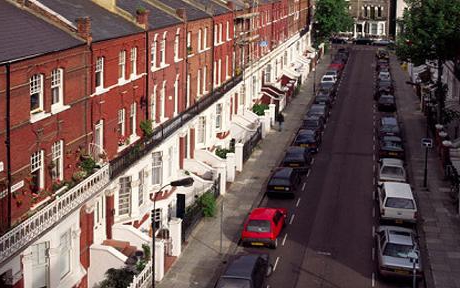
But the table only affects parking rules outside the courtyard areas. How is it going there?
Courtyard parking
A couple of years ago, the yards were crowded with cars parked randomly. Often it was difficult for people to simply go through and open the porch door, not to mention the inconvenience this created for citizens with less mobility. However, the introduction of larger fines and facilitating the process of filing a complaint against the violator did their job: the dominance of cars stopped. So, in Moscow for a race on the sidewalk you can lose the amount of 3 thousand rubles, and for parking on the lawn - already 5.
If we just talk about parking rules in the yard, then it has some features. According to paragraph 17.4 of the SDA, it is forbidden to leave the vehicle where it will interfere with passage or passage, on sidewalks and lawns. In addition, this paragraph regulates the speed at which you can move in residential areas and the prohibition of driving on footpaths and sidewalks.
In addition to the written rules for parking in the courtyards, it is also necessary to use elementary politeness and respect for residents of nearby houses. So, parking in front of the entrance is considered bad form when the vehicle makes it difficult to access it. In addition, by regularly blocking pedestrian paths, one can sometimes find unpleasant notes under the car wiper, or even the “iron horse” will suffer revenge from its owner on the part of those who prefer to walk.
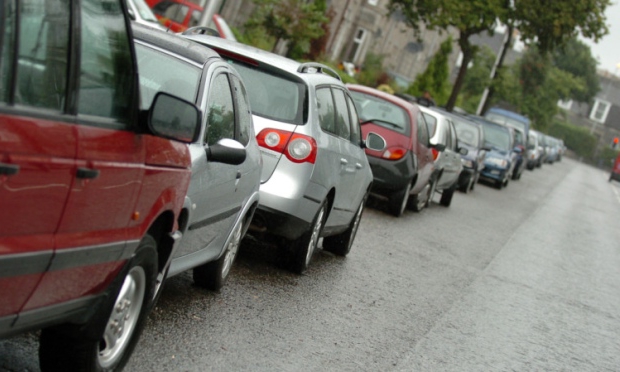
Prohibition signs
Of course, even in places suitable for parking, at first glance, it may not be allowed. In order not to commit a parking violation and not leave the car in such an area, you need to pay attention to the signs and road marking.
This applies primarily to the signs of the prohibition of stopping and parking (paragraphs 3.27 and 3.28, respectively), as well as paragraphs 3.29 and 3.30, which allow parking only on certain days and hours. All motorists who have conscientiously studied at a driving school know about all this. But not so long ago, parking rules on the roadway began to provide for the designation of prohibition zones with special signs painted directly on the roadway.
Firstly, a place where parking is not permitted is signaled by a yellow bar along the edge of the roadway. Secondly, these are the guide islands present at the confluence of several roads. They look like a white hatched field. Thirdly, it is a zigzag yellow line that can be seen next to public transport.
Paid parking
Drawing on the experience of some European cities, Moscow recently introduced a system according to which parking in the city center becomes paid. At the same time, all yards, where car enthusiasts could save, are now closed for entry with the help of barriers. But this does not mean that you can leave the car anywhere. There are rules for paid parking, for example, you can not leave the car on a rounded marking.
This was done as part of the capital’s transport development program along with the construction of intercepting parking lots and transport hubs, making it easy to transfer from the metro to a bus or trolleybus and vice versa. And this measure, perhaps, can be called effective: it allowed to slightly reduce the number of people seeking to drive to the center and park there. Now cars are orderly, and there are much fewer.
Paid parking area is constantly expanding. If quite recently it was limited by the Garden Ring, now all new areas are involved in it, but so far only inside the Third Transport Ring. The cost varies from 40 to 80 rubles per hour, you can purchase subscriptions for a month and a year. For those who live in these areas, you can issue a special resident permit, the use of which will cost only 3 thousand a year.

Other features
In addition to where to park the car, you need to know how to do it right.For example, there are parking rules in reverse, including parallel to the road.
Firstly, it is necessary to turn on the turn signal to show other participants in the movement their intentions and further actions. Secondly, you need to make sure that there are no obstacles that would not allow you to move backward. Next you need to park. And although this is not stated in the SDA, many motorists, when driving at such a moment, include emergency stop signs, which makes the vehicle more visible.
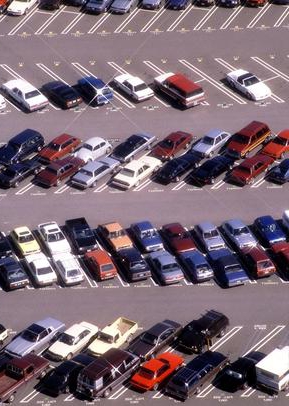
What threatens violation?
Despite the fact that some motorists neglect parking rules very often, the punishment for this misconduct is not too severe: most often it is just a fine. Another thing is if the car interferes with the traffic of the street or pedestrians. In this case, the car is evacuated to a special parking lot, and it is not always easy to find it. But even fines have recently become very, very significant:
- Parking is the second row on the carriageway or in any case, except for forced ones, on tram tracks. The punishment for such a violation is a fine of 1,500 rubles and evacuation.
- Parking is closer than 15 meters to public transport - 1000 rubles. Evacuation is optional if the vehicle does not interfere.
- Parking, which caused serious traffic difficulties, as well as parking in tunnels. A fine of 2,000 rubles and vehicle retention (for Moscow and St. Petersburg - 2500).
- Parking closer than 5 meters to the pedestrian crossing or parking on the sidewalk - 1000 rubles and a car stop (for both capitals - 3000).
- Wrong parking on site for disabled people. Fine - from 3 to 5 thousand rubles.
- Stopping and parking in prohibited places. It entails the evacuation of the car and a fine of 1,500 rubles (3,000 for Moscow and St. Petersburg).
- Traffic on a specialized route lane or parking on it. In practice, such zones exist only in capitals, and for such a violation it would be necessary to part with 3 thousand rubles (in theory in the regions - 1,500).
It is worth recalling that the availability unpaid fines can be a serious problem if the traffic police stop for some other reason. Also, those who prefer to ignore “letters of happiness” may not be lucky when crossing the border, for example, before traveling abroad for a vacation. You can encounter such problems when you owe 2,000 rubles or more to the budget.
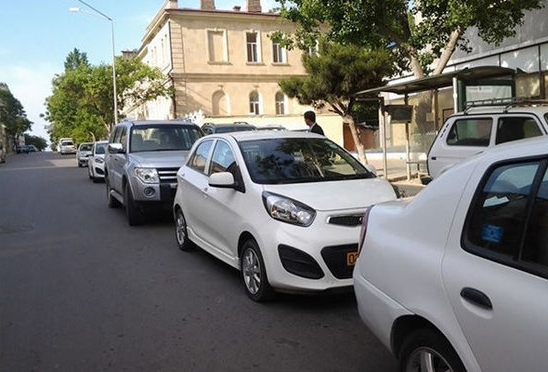
How to rescue a car?
As a rule, this is relevant only for Muscovites, but it is still worth mentioning what actions should be taken if the car was evacuated. You can call the Moscow parking space: 8 (495) 539-22-99 or just 112. They will say the address of the parking lot to which the car was sent. To rescue him, you need to get permission to return to the traffic police on duty by paying a fine and presenting a driver’s license, vehicle registration certificate and the insurance policy. After that, a copy of the protocol on the detention of the car will be issued. With her and the rest of the documents you will need to go to the parking lot itself.
But it's better not to commit a parking violation!
